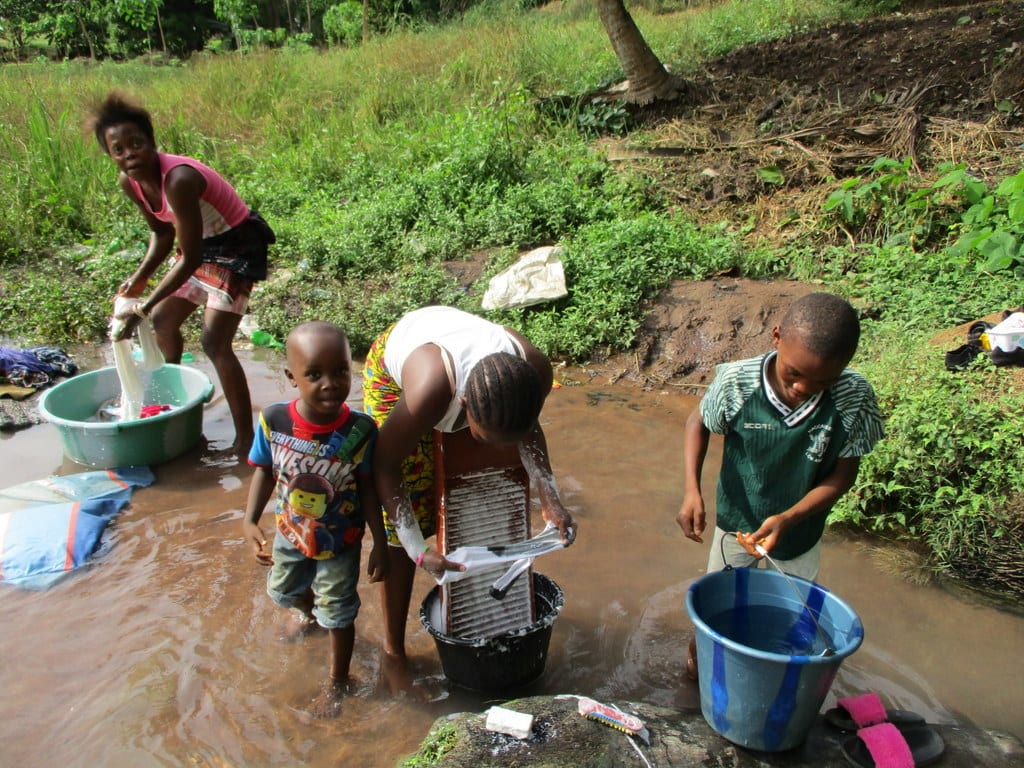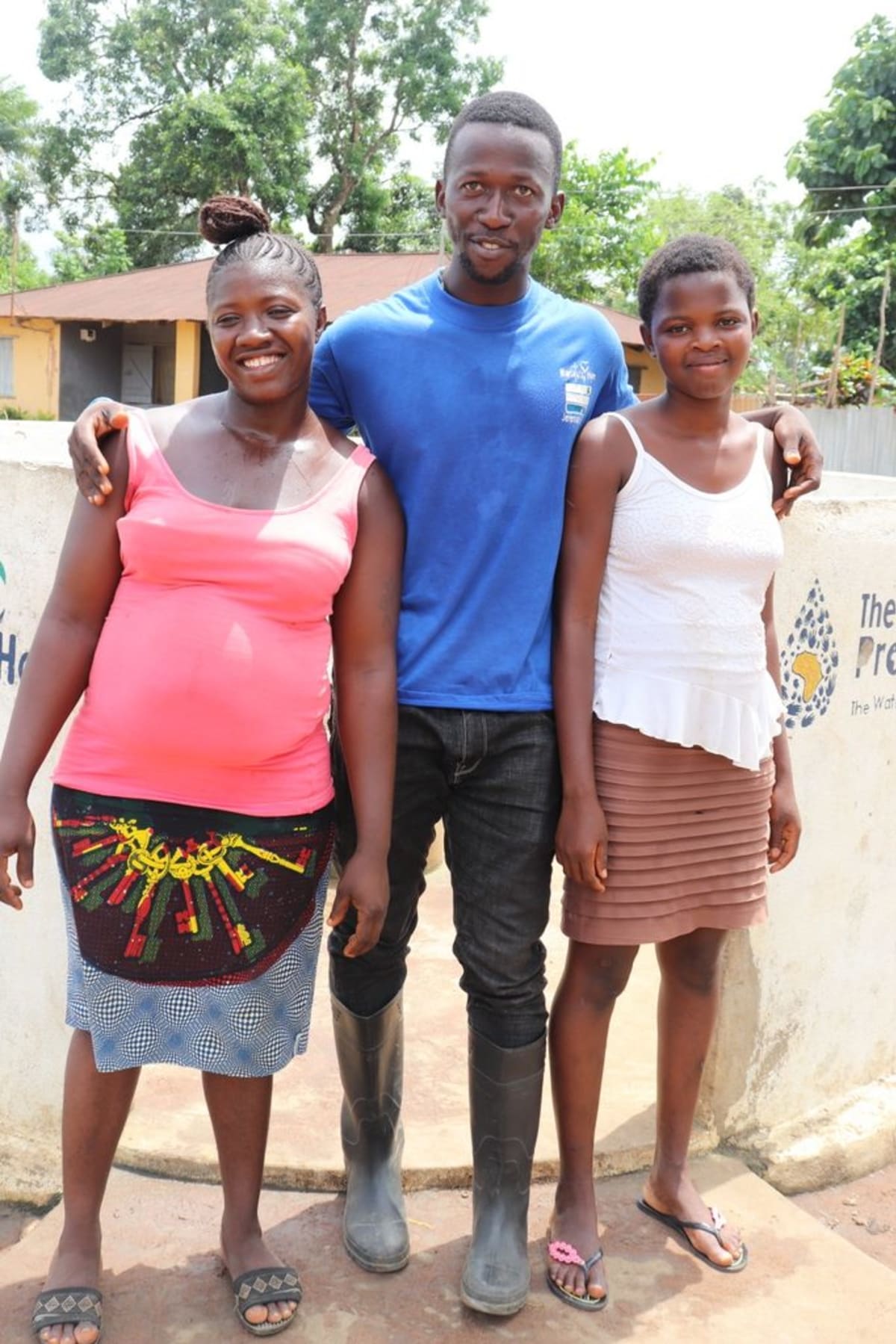The Fire Force Barracks are just around the corner from our office in Tintafor - a place in the far west of Lungi, Sierra Leone. We actually drive through this area quite a bit and have thus been able to witness the need for ourselves.
This community was established in 1945 by the Sierra Leone government because of the opening of Freetown Airport. These barracks are for the fire personnel who are always on standby. Each household has at least one adult who is employed by the nearby airport.
Water
The children living here wake up as early as 5am to fetch water. They return home with it to wash the dishes from the previous night's dinner, and then they get to eat leftover bread or rice. They use the rest of their water to take a bath. The children have to go back out to fetch water after school, too.
There aren't any clean water points in this area. To find clean water, children have to walk to the neighboring community to one of our wells. When a child chooses to take the trip for clean water, they're willing to spend at least an hour lined up waiting for their turn. This well is already very busy with its own local users.
Waiting in a long line is often tense for these children, with fights breaking out when someone tries to sneak ahead in line. With such a high population in Tintafor, we know that each part should have its own clean water source. We've witnessed the long lines at the neighboring community's well too.
To avoid the line, women and children often walk to the swamp for water. They must go down and up a steep hill to get the water, but there's no line. Containers are dunked under the water's surface wherever a person can find enough room. Community members say it's normal to have to make at least two or three trips each day to the swamp.
There is also an unprotected, old well that sometimes has water inside. During the time of our visit at the peak of the dry season, this wasn't being used. When there happens to be water, a bucket and rope can be lowered down.
"We are often exposed to sexual harassment from boys that loiter around the water source area," 16-year-old Maya Kargbo told us.
"Also, lateness to school often leads to poor performance and therefore bad grades. More so, tiredness as a result of water-pumping and transportation leads to a greater energy loss. These and other effects have been plaguing me so much that I feel psychologically tortured at times."
Sanitation
Every household around the barracks has its own pit latrine, and all of these are made of cement. They are swept and scrubbed with water kept nearby.
However, people are missing other important sanitation tools like dish racks and clotheslines to dry their belongings. It's especially dangerous to have kitchen utensils just sitting out on the ground.
"The current state of hygiene and sanitation in this community is not too encouraging. Sometimes our kitchen utensils are left unclean dirty cloth are all over the room. We also have limited finances to practices proper hygiene and sanitation," Mr. Augustine Sesay said.
Here's what we're going to do about it:
Training
There will be hygiene and sanitation training sessions offered for three days in a row.
The hygiene and sanitation trainer decided it would be best to teach community members about the importance of building a latrine, how to build a hand-washing station, and more. They will also teach about other tools like dish racks and the importance of properly penning in animals. Pictures will be used to teach the community how to discern between healthy and unhealthy hygiene and sanitation practices.
These trainings will also result in a water user committee that manages and maintains the new well. They will enforce proper behavior and report to us whenever they need our help solving a serious problem, like a pump breakdown.
Borehole
The community will be meeting together to determine the best location for their new well, and then we’ll confirm the viability of their choice. Wherever the drill site, we know clean water will be extremely close to everyone in such a small village!
Our team will drive over the LS200 mud rotary drill rig and set up camp for a couple of nights. Once the well is drilled to a sufficient water column, it will be cased, developed, and then tested. If these tests are positive, our mechanics will install a new India Mark II pump.
This community has been drinking dirty water from the swamp and is suffering the consequences. By drilling this borehole, the area around Fire Force Barracks in Tintafor Community will be provided with plenty of safe, clean drinking water of their own.
This project is a part of our shared program with Mariatu’s Hope. Our team is pleased to provide the reports for this project (edited for clarity) thanks to the hard work of our friends in Sierra Leone.

 Borehole Well and Hand Pump
Borehole Well and Hand Pump
 Rehabilitation Project
Rehabilitation Project


























